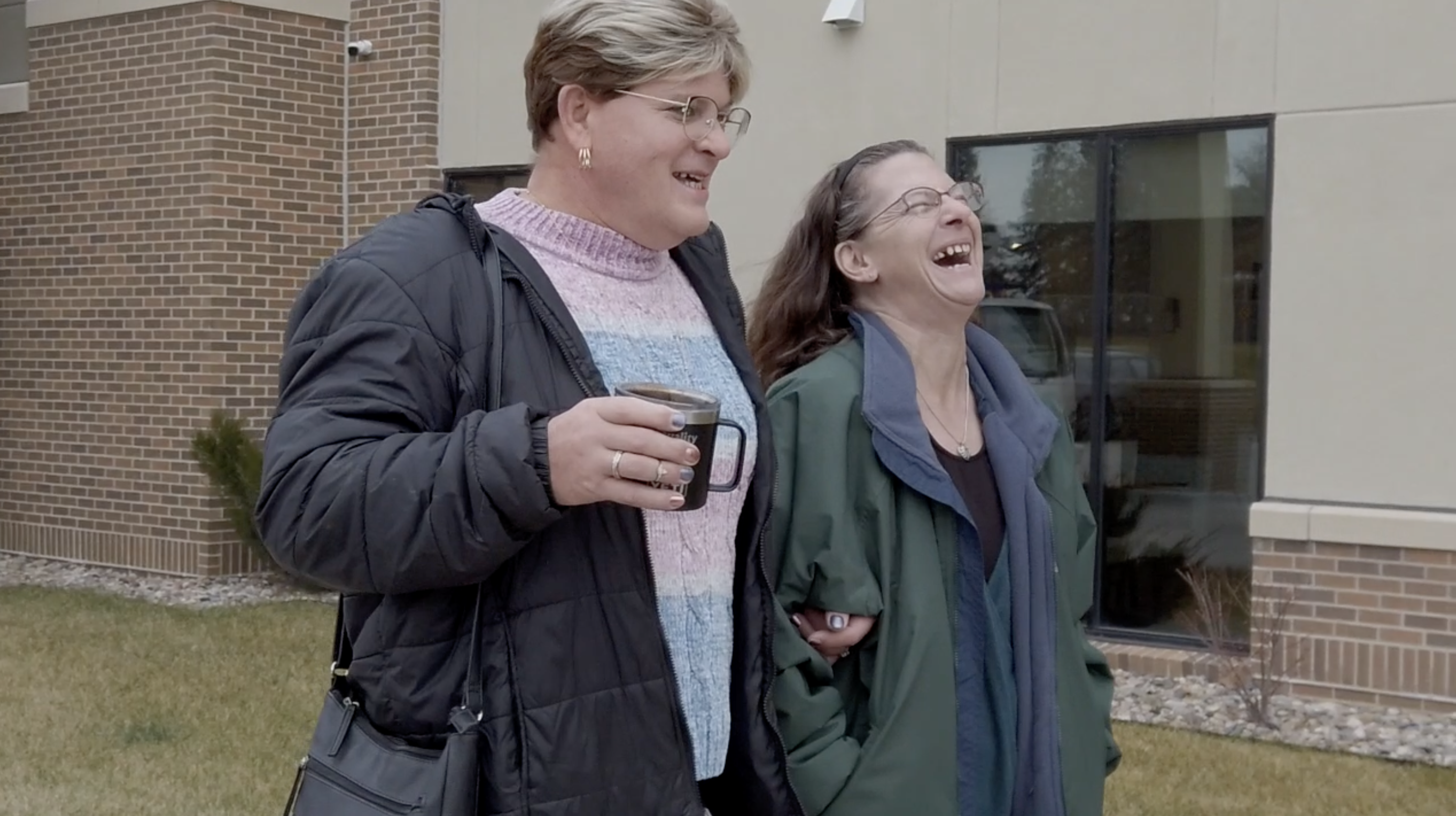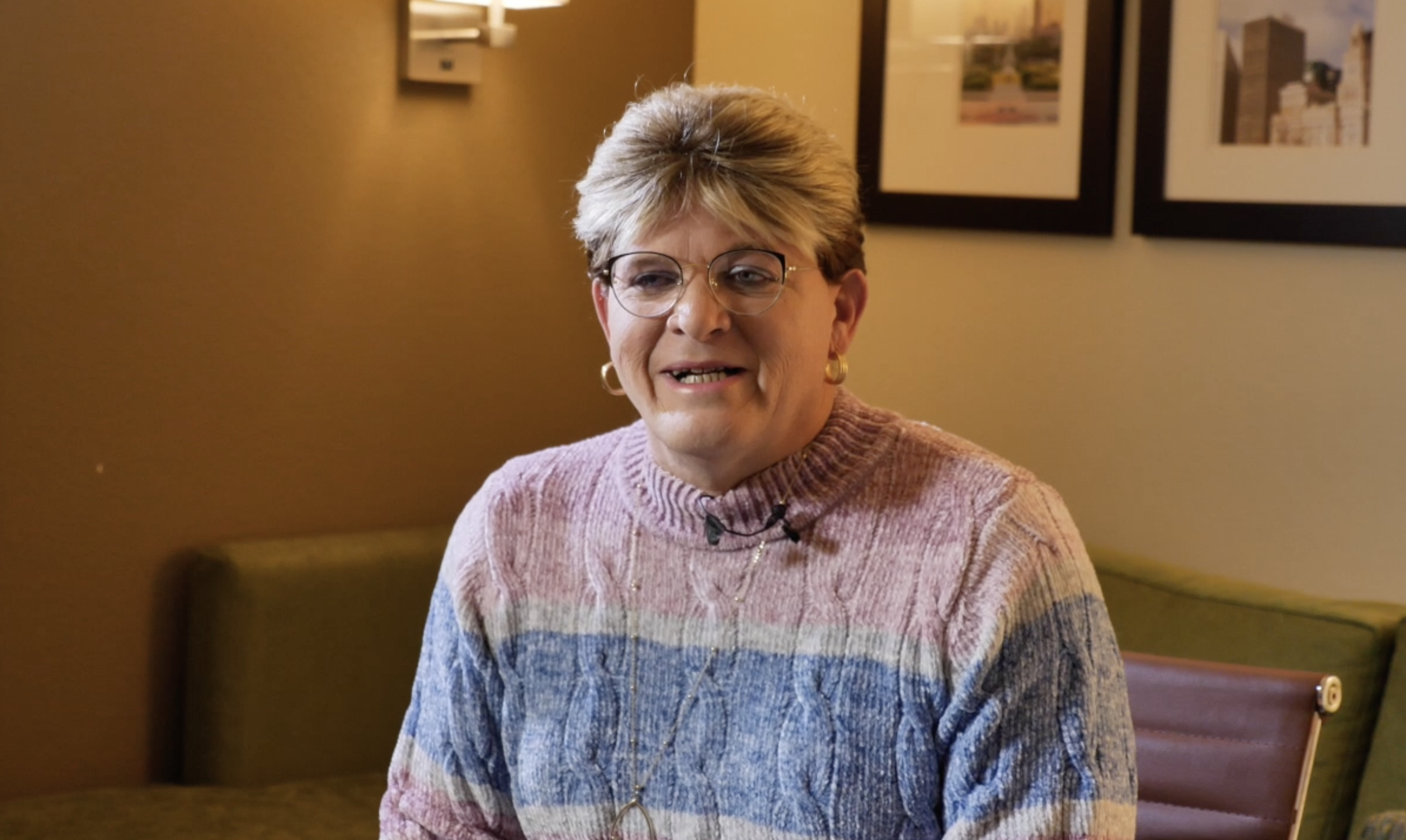Jamie's Journey: From Brain Injuries to Breakthroughs
Jamie Kragelund of Nebraska gets teary-eyed when considering how many visual processing, memory, and concentration skills have been regained in less than a year, including two visits to the Mind-Eye Institute in Northbrook, Illinois.
“I was a mess when I started going to Mind-Eye and [optometrist] Dr. [Carla] Adams in February 2023,” says the former grain elevator manager. “I was not talking or communicating well because of my multiple brain injuries. I could not concentrate. My thoughts were going a mile a minute. And I was experiencing migraines. My symptoms had slowly developed during the past several decades but worsened within the prior year due to significant stresses in my life.”
Yet, despite the years of struggles, “my speech patterns were already noticeably improving between my first visit and, three months later, my second visit to Mind-Eye. I could actually hold a conversation. Also, I was better able to concentrate, to focus on one thing at a time,” recalls Jamie, who adds that changes have been progressive.
“I was a mess because of my brain injuries. But Dr. Carla Adams told me brains can change. She said the team there can help me rewire my brain.”
- Jamie Kragelund, Mind-Eye Patient
A New Hope: Discovering Mind-Eye Institute and Brainwear™ Glasses
“When I received my first pair of Brainwear™ eyeglasses, I was hoping that a light would switch on, and I would immediately get better as soon as I wore the glasses. However, nothing seemed to happen at first. To me, they seemed to be just another pair of glasses. Yet, subtle changes began occurring. Other people noticed improvements in my speech over time, and the Mind-Eye glasses were clearing my mind, slowing my thought processes. I came to realize that improvement can be gradual; it does not always happen all at once.”
Even sight in the right eye – sight Jamie thought was irreparable following a fall from a tractor as a child in 1979 – has begun slowly returning. “The farming accident damaged my right eye’s retina and left me only with some peripheral sight. I had been told that I would become completely blind in that eye by age 25. Now, Dr. Adams has been testing my right eye, and its [peripheral] field of sight has much improved, because, as Dr. Adams says, brains continue to evolve. Amazing! A problem I have struggled with for more than 40 years is getting better.”
The Science Behind the Mind-Eye Institute's Work
The Mind-Eye Institute team is noted worldwide for helping build better brains. The Institute’s clinical successes involve use of individualized, prescription lenses, filters, prisms, and other optical interventions to stimulate the retina with light.
“Varying the amount, intensity, or angle of light passing through the retina affects how the brain interprets and reacts to information about the environment and can impact a person’s spatial awareness, body movement and selective attention to sound,” says Mind-Eye founder and executive research director Deborah Zelinsky, OD.
Indeed, the retina is an extension of brain tissue and serves as a vital component of the central nervous system. Environmental signals (in the form of light) enter the retina and convert to electrical signals, which propagate through neurons and interact with key brain structures. These retinal signals affect not only the visual cortex for eyesight but other, significant regions of the brain as well, Dr. Zelinsky explains.
The Weight of Personal, Professional, and Emotional Obstacles
For Jamie, two severe car crashes that actually resulted in deaths and multiple sports-related injuries had started taking their toll. Jamie was having increasingly problematic memory issues, and the many brain injuries incurred over the years even impacted motor function to a degree.
“I might be holding a cup of coffee, for example, and, for no apparent reason, suddenly let go of it. Or my fingers would drop a pen while I would be writing. These kinds of things were happening with more frequency, but I just learned to adjust,” Jamie says. “I was not thinking too much about it.”
However, a series of physical health problems – one that required back surgery, forcing Jamie into early retirement from 27 years of work as a grain elevator manager, and then hip replacement a year later – also seemingly intensified the brain issues. “I started experiencing three to five migraine headaches a week, and my memory worsened.”
“I developed mental overload. With everything going on, I could not concentrate. I had trouble thinking and communicating. I felt stuck, trapped.”
- Jamie Kragelund, Mind-Eye Patient
In fact, a worsening memory was another factor prompting Jamie’s retirement.
“When you are responsible for loading a 110-car train, you have to remember which products are in what bins, figure out the proper blending of various kinds of grains to meet the needs of clients, and, at the same time, abide by all the regulatory requirements. This kind of multitasking was becoming increasingly difficult for me,” Jamie says.
What eventually pushed Jamie over the edge and sent wife, Jennifer, looking for answers were the recent death of Jamie’s mother and, soon afterwards, a work accident that led to the amputation of a son’s leg.
“I developed mental overload. With everything going on, I could not concentrate. I had trouble thinking and communicating. I felt stuck, trapped. Jennifer began doing some Internet research and found the Mind-Eye Institute. We decided to give them a call,” Jamie says.
Looking Forward: Continuous Improvement and Embracing Change
Initially, Jamie expected the Mind-Eye to be similar to other optometry practices, “but that was not at all true,” Jamie says. “The testing was fascinating. Then Dr Adams told me a brain is able to change. She explained how the use of lenses to bend light in different ways as it passes through the eyes can help rewire the brain and alleviate symptoms of injury.”

As of early 2024, Jamie is wearing a third pair of prescribed Brainwear™, and says, “I am nearly 100 percent better than I was before my first visit to Mind-Eye. A year ago, I could not have told my story as I am doing now. The Mind-Eye glasses and the memory- and visual processing-improvement exercises Dr. Adams has prescribed me have made a huge difference in my life.”
The one special element of the Mind-Eye team: “They truly care about each person there. They keep working to improve not only how you feel, but how you feel and react to the world around you,” Jamie says. “My goal now is to return to who I was, to be able to multitask again and keep everything straight” – and simply to remember it all.
Although Jamie Kragelund reports progressive symptom relief, her experience is not always the norm, nor is it guaranteed for every patient. Check out the Mind-Eye Institute at www.mindeye.com for additional information.


